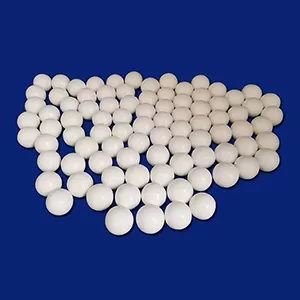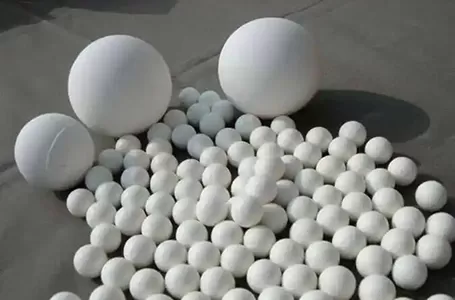White ceramic balls are a common type of ceramic product, mainly belonging to alumina ceramics, with compositions primarily consisting of aluminum oxide (Al₂O₃), often with small amounts of other additives to enhance performance, and their white color is due to high purity and minimal impurities. This distinct color makes them easily distinguishable from other ceramic balls and is closely tied to their material makeup and production techniques.

Alumina white ceramic balls are the most prevalent type, with aluminum oxide as the core component, typically making up 85% to 99% of their composition. The higher the alumina content, the whiter and more translucent the balls tend to be, as higher purity means fewer impurities that could affect the color. For example, 95% alumina ceramic balls have a bright white appearance, while 99% alumina balls are even whiter and more reflective. These balls offer excellent wear resistance, high hardness, and good chemical inertness, making them suitable for a wide range of industrial applications.
Additives in alumina white ceramic balls are usually present in small quantities, around 1% to 15%, and include substances like silica (SiO₂), magnesia (MgO), and calcia (CaO). These additives act as sintering aids, helping to lower the sintering temperature and promote densification during manufacturing, which in turn enhances the mechanical properties of the balls. Importantly, these additives are chosen for their ability to not compromise the white color of the final product.

In some cases, white ceramic balls may also be made from zirconia ceramics, though this is less common. Zirconia white ceramic balls are composed mainly of zirconium dioxide (ZrO₂) with stabilizers such as yttria (Y₂O₃) or ceria (CeO₂) added to prevent phase transformations. These balls have a creamy white color, slightly different from the bright white of high-purity alumina balls, and are valued for their high toughness and impact resistance, finding use in applications where durability under stress is crucial.
The manufacturing process contributes significantly to maintaining the white color of these ceramic balls. Sintering in an oxidizing atmosphere helps prevent the formation of dark-colored compounds, ensuring the purity of the white hue. Strict quality control during raw material selection is also essential, as even small amounts of iron oxide or other impurities can cause discoloration, making the balls appear gray or off-white.
When used as packing in industrial columns, white ceramic balls leverage the properties of their base materials. Alumina white ceramic balls, with their chemical inertness, are ideal for packing in columns handling corrosive fluids, while zirconia white ones, with their toughness, perform well in packing applications where mechanical stress is a concern.
In summary, white ceramic balls are predominantly alumina ceramics, with compositions centered on aluminum oxide and small amounts of sintering aids, and their white color stems from high purity. Less commonly, they can be zirconia ceramics, offering different properties but maintaining a white appearance, serving various industrial needs with both functionality and a distinct visual characteristic.



